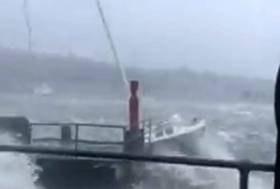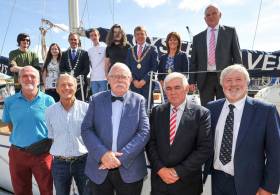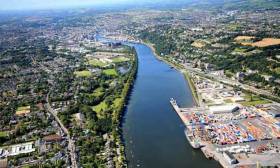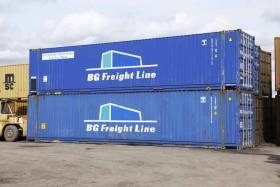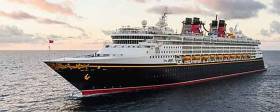Displaying items by tag: port of Cork
Storm Ophelia Video: Cork Harbour Yacht Breaks Moorings in Monkstown Bay
A video of a yacht that broke free of its mooring in the teeth of Storm Ophelia in Cork Harbour, has recorded over 50k views on social media.
The Ensign Bar in Monkstown Co. Cork posted the vid on Facebook in the teeth of the Hurricane when Force 12 winds tore across the harbour, closing the Port of Cork.
With halyards and furling headsail flying, the seemingly doomed yacht narrowly avoids collision with Monkstown's quay wall then disappears downwind in the spume and waves lashing up on Cork harbour walls.
Three died in separate incidents as over 200,000 left without power when the hurricane struck Ireland today.
Storm Ophelia: Port of Cork Shipping Movements Suspended
All Port of Cork shipping movements have been suspended in the harbour since 0600 this morning.
Cargo operations are suspended until further notice, all cranes and cargo handling equipment have been secured until the storm passes.
All persons are advised to stay away from the quays and exposed areas within the harbour.
Marine leisure craft are advised to stay off the river until the storm has abated.
Cork Sail Training Bursary Awards Celebrate Tall Ship Voyage Achievements
A presentation ceremony took place in the Port of Cork to celebrate the achievement of 26 young people from all backgrounds and a range of abilities across Cork City and County who completed voyages aboard the Cork-Based Vessel Spirit of Oysterhaven and the Tall Ship Pelican of London during the 2017 season. These voyages were made possible by a group of generous sponsors including Port of Cork, Cork City Council, Cork County Council, Dell, Ardmore Shipping, Enterprise System Partners, The Institute of Master Mariners and the National Maritime College of Ireland.
Four trainees from the City and County crewed the Pelican from Dublin arriving in Belfast after 12 days exploring around the Irish sea. The Pelican was due to call to Cork during this voyage but unfortunately was forced to turn back due to adverse weather. Another two Cork trainees sailed from Belfast to Liverpool and on to Dublin over 10 days. These trainees formed part of groups with up-to 28 trainees and mentors on each voyage which were part funded using EU “Erasmus +” funding and involved active educational programmes of youth development as part of “Youth Exchange” projects.
In addition 20 Cork based young people took part on two six day voyages on the gorgeous local vessel Spirit of Oysterhaven. These lucky trainees enjoyed the beautiful coastline scenery while sailing between Glandore and Cork.
The Cork Sail Training Bursary Scheme was established in 2014 to provide access to Sail Training voyages on tall ships and large sailing vessels for young people from the region. Now in its fourth year the scheme is one of the largest and most active on the Island of Ireland and runs in parallel with similar schemes now in operation under Sail Training Ireland in Belfast, Drogheda, Dublin, Waterford, and Galway. The participants are nominated through a network of youth and community groups in Cork and places are available to young people from all backgrounds and with all abilities. The scheme has supported approximately 80 trainees since 2014 and looks likely to grow from strength to strength over the coming years.
Also present on the day were trainees straight off the “Spirit of Oysterhaven” having finished their recent voyage today (day of event 1st of September), following 6 days at sea beginning in Glandore County Cork. The vessel was alongside in Port of Cork during the event and opened to visitors afterwards.
“Our young people returned to us not just with new experiences but new skills, new friendships and new directions for the future.” Cork Life Centre.
Speaking at the presentation ceremony, Brendan Keating Chief Executive said: ‘The Port has been involved with Sail Training Ireland for a number of years now and has supported many voyages for young adults. We feel this is a very worthwhile initiative for the Port of Cork which teaches seamanship, teamwork, personal development and importantly gives them an awareness of life at sea. We would like to commend all 26 of the young trainees today and wish them the very best for their futures.’
MC for the event was former RTE Radio “SeaScapes” Presenter Marcus Connaughton (Goodwill Ambassador for Sail Training Ireland) and the certificates were presented to trainees by Lord Mayor of Cork City Tony Fitzgerald, County Mayor Declan Hurley and Commodore Hugh Tully Flag Officer Commanding Naval Service (F.O.C.N.S.). The Naval Service is a strong supporter of Sail Training for young people as a stepping stone into maritime careers.
Cork – A River Port to a Sea Port
In an exclusive interview for my weekly This Island Nation podcast, the Chairman of Cork Port says that it is moving “from a city port to a sea port.”
Listen to John Mullins as he outlines why the port company “must leave a legacy behind to Cork City as it moves its operations downriver to Ringaskiddy and must create new relationships with all of the harbour communities.”
He spoke to me at the announcement of the Cork Harbour Festival, which will run from June 3 to June 11.
Listen to the podcast below where he also speaks about plans for Marino Point and reveals what is proposed for the development of the iconic, historic harbour offices and buildings on Custom House Quay in Cork City centre and the marina attached to it.
‘Saga Pearl 2’ Commences Port of Cork Cruise Season 2017
Saga Cruises’ MV Saga Pearl 2 will start the Port of Cork’s cruise liner season on 20th March, the first of 65 calls expected to visit Cork this season. Seven new liners will call this season on their maiden call, while Princess Cruises’ MV Caribbean Princess carrying 3,500 passengers will make fourteen visits this season.
With 65 calls in 2017, the Port of Cork anticipates a very busy season ahead for all involved, and an increased economic benefit for the region. Approximately 160,000 passengers and crew are expected to visit the city and county between March and November.
Commercial Manager at the Port of Cork, Captain Michael McCarthy said: ‘The 2017 Cork cruise season is booming which is great for the port and the region. The numbers of calls are up compared to 2016 and we feel very positive about this increase in business. It’s also very encouraging to see cruise lines bringing their newest vessels to Cork on maiden calls and choosing Cobh as part of their cruising route.’
He continued: ‘It is our ambition as a port company to attract larger cruise ships and increase our cruise calls to 75 per year. Already in 2018 the bookings are indicating we will achieve this goal, if not exceed it.’
In 2016 Cruise Critic, the world's leading cruise review site and online cruise community, announced the winners of the inaugural Cruise Critic Cruisers’ Choice Destination Awards with Cork’s Cobh ranked second favourite cruise destination in the British Isles and Western Europe. These awards recognised the high level of effort that goes into ensuring every cruise passenger visiting Cobh has a memorable visit to the region.
As well as Cork the Port of Cork also operates Bantry Bay Port Company which will see eight cruise liners calling to the West Cork area this summer. Bantry Harbour and Glengarriff can accommodate the smaller boutique cruise liners whose passengers tend to look for active expedition cruises.
BG Freight Line Announce New Container Service from Port of Cork
Leeside Shipping, agents for BG Freight Line in Cork have announced a new container service between the ports of Cork and Liverpool. This new service is due to commence at the end of March 2017.
This is the first time these ports have been connected directly, and the new route will offer greater opportunities for customers in the South of Ireland to make connections with the deep-sea services now calling at the Port of Liverpool, particularly from Canada, the east coast of the US and the Mediterranean.
The new service will also provide a quay-to-quay route for tank operators, and door to door opportunities into the North of England, Midlands and Scotland - regions previously only accessible via Dublin.
The weekly schedule will be:
Saturday Liverpool
Monday Cork
Wednesday Liverpool
At the end of the each week, the vessel will continue to offer services between Belfast, Greenock and Liverpool.
BG Freight Line is one of the companies within the Peel Ports Group, and currently operates 23 containerised vessels, offering a variety of services at following Ports:
Cork, Dublin
Belfast
Felixstowe, Teesport, South Shields, Immingham, Liverpool
Grangemouth, Greenock
Antwerp
Rotterdam
Montoir, Brest, Dunkerque
Their frequency of sailings is one of the best in the trade, with each Port having at least two calls per week.
Commenting on this new container service, Port of Cork Harbour Master Captain Paul O’Regan said: ‘We welcome this new freight service with BG Freight Line as it opens up further frequent freight movements from Cork, with the added benefit of deep sea connections via Liverpool to the US and the Mediterranean.’
In 2016, BG Freight Line was named the Ship Operator of the Year at the Marine Industry Awards. ‘As an island economy, Ireland needs shipping services to access markets around the world. The reliability, efficiency and competitiveness of these services influence national competitiveness, international trade and the job creation potential of the Irish Economy. Put simply, excellent shipping services help the Irish economy to grow. This reward recognises excellent in this mode of transport’.
In 2018, the company will take delivery of 4 new build ‘green’ vessels. The sister ships are currently under construction at Zhoushan Changhong International Shipyard, and have been developed by BG Freight Line, in conjunction with designers CIMC ORIC and Arkon Shipping. The vessels are being built to DNV GL specification and fitted with state-of-the-art features in order to comply with Emission Control Area (ECA) requirements - a clear commitment to achieving the highest possible environmental standards.
Opening Up Bantry Bay – A Maritime Hub In the South West
Bantry Bay is one of this island’s greatest maritime resources and is about to be opened up with a new marina very close to the centre of the town. Twenty-two miles long from its entrance and with 22 slipways and launching areas, plus a couple of islands, this can be a cruising mecca.
The Port of Cork Company which took over Bantry Harbour from the previous local harbour authority, has spent €9.5m. on the development of facilities there, turning the old pier area into a more extensive commercial facility, improving depth of access and providing in the inner harbour, a new marina. The development will operate under the aegis of the Bantry Bay Port Company.
All of this promises a new future for the harbour and Bantry as a maritime hub, not only for the leisure sailor, but for angling, fishing, other maritime activities and attracting more cruise ship visits by the improve facilities. The marina will provide 30/40 berths dependent upon size of vessel, dredged to a depth of 4 metres.
On this week’s THIS ISLAND NATION PODCAST, Cork and Bantry Harbour Master, Captain Paul O’Regan, outlines the development to me. I started by observing that nine-and-a-half million Euros was a big financial commitment to Bantry.
New Images Of Massive Cranes Loading Onto Ship In Cork Harbour
#CorkHarbour - The first of three Liebherr cranes has been loaded onto the Albatross heavy lift vessel at the Port of Cork.
As previously reported on Afloat.ie, the three 85-metre-tall cranes — each weighing more than 1,000 tonnes — are bound for Puerto Rico after being assembled from kit form at Cobh by employees from the Liebherr plan in Kerry.
Liebherr Marine has posted photos captured by drone as the first crane was loaded onto the specially adapted Albatross in Cork Harbour yesterday (Wednesday 22 February):
Disney Cruise Line is Coming to Cork Harbour in 2018
Disney Cruise Line has revealed its summer 2018 itinerary includes the Port of Cork on their list of first time visits.
2017 is already being described as one of the busiest cruise seasons in Cork with 69 cruise liners calling to the port.
The ‘Disney Magic’ will travel to Cork Harbour for the first time as part of Disney Cruise Line’s new seven-night British Isles cruise, departing in September 2018.
Announcing the first time call, Disney Cruise Line described Cork as ‘home to a vibrant culinary scene and a plethora of pubs, shops and cafes. It invites visitors to connect with Ireland’s ancient past, with historic sites like Blarney Castle, where visitors can kiss the famed Blarney Stone.’
Captain Michael McCarthy, Commercial Manager Port of Cork said: ‘After years of marketing the region and port capabilities, we are delighted to say the hard work has paid off and we are very excited to welcome Disney Cruise Line to our port in 2018. I have no doubt this call will be one of many into the future as we grow our relationship with Disney Cruise Line.’
Capable of holding over 3,700 passengers and crew, ‘Disney Magic’ is designed with primarily the family in mind. According to Disney Cruise Line the Disney Magic combines classic nostalgia and modern amenities with Disney’s signature service. From bow to stern, set sail for unforgettable storytelling that only Disney could bring to life.
Captain McCarthy continued: ‘this is a wonderful opportunity for the region particularly family attractions that are set to benefit from such cruise visits.’
Three cranes, each weighing more than 1,000 tonnes and 85 metres high will be loaded on to a massive ship next week in Cork Harbour bound for Puerto Rico. It will be an amazing feat of engineering and an equally spectacular sight at the Port of Cork to see the massive cargo depart Roches Point.
The cranes have been asembled from kit form having first been shipped by sea from Fenit in County Kerry to the Doyle Shipping Group Terminal at Rushbrooke in Cork Harbour.
60 employees from the Liebherr crane plant in Kerry have been constructing the massive cranes prior to their transatlantic voyage.
The specially adapted ship, The Albatross from Holland, arrived yesterday into the Port of Cork awaiting its giant cargo alongside at Cork Dockyard, as the photo below shows. Known as a 'heavy lift' vessel, the Albatross is 264.45 metres long and 42.54 metres wide, the ship has a maximum speed of 9.5 knots.
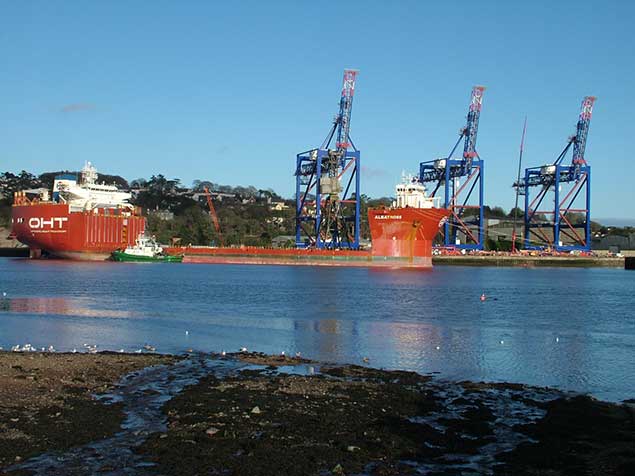 The heavy-lift ship, Albatross, is making maritime history in Cork Harbour this weekend having arrived at Cork Dockyard to transport three huge, fully-completed dock cranes to Puerto Rico Photo: Tom MacSweeney
The heavy-lift ship, Albatross, is making maritime history in Cork Harbour this weekend having arrived at Cork Dockyard to transport three huge, fully-completed dock cranes to Puerto Rico Photo: Tom MacSweeney
Tom MacSweeney in Cork Harbour adds: It is the first time that the Liebherr crane manufacturing company based at Killarney has exported fully-assembled cranes from Ireland for which they used the Cork Dockyard facility at Rushbrooke near Cobh to assemble them over the past few months.
The ship can automatically lie level alongside the dockyard quayside at all stages of the tide during the loading operation which is expected to take 4 to 5 days. Tracks will be laid to move the cranes onto the vessel.The Albatross will then move across Monkstown Bay to Ringaskiddy deepwater port where the cranes will be bolted to the ship and she will ballast for the voyage to Puerto Rico.


























